Britain faces a surge of wasps, an expert has warned, after scorching temperatures sparked ‘the year of the insects’.
Andrew Dellbridge of Ace Pest Control in Norfolk said the spring sunshine had lured wasps out of hibernation early, giving them more time to grow.
And though they’ll die off come winter, the head start means this year’s nests are already surpassing last year’s in size, with months still to go.
Now wasps are experiencing a ‘population explosion’, Mr Dellbridge said, and Britain faces a wave of jumbo nests before winter.
He said: ‘What I would expect to do in September–October as far as size of nest and multiple wasps within a nest, we’re getting now.
‘By September–October, the right back end of the season before they all die off, we should be in massive nest territory.’
Worryingly, Mr Dellbridge also predicts a spike in aggressible wasp behaviour.
And, unlike bees, wasps can go on to sting victims multiple times.
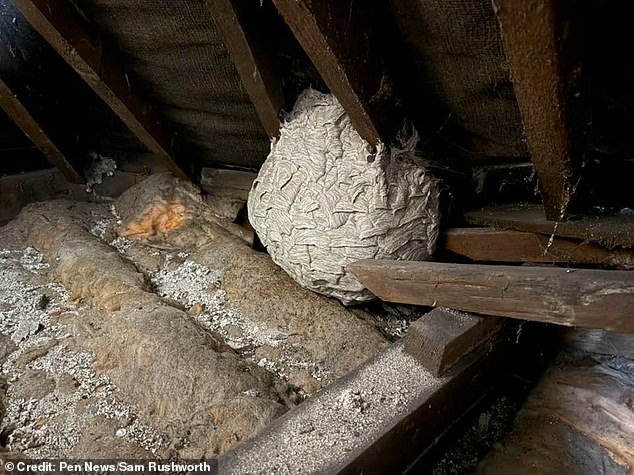
Wasps are experiencing a ‘population explosion’, Mr Dellbridge said, and Britain faces a wave of jumbo nests before winter
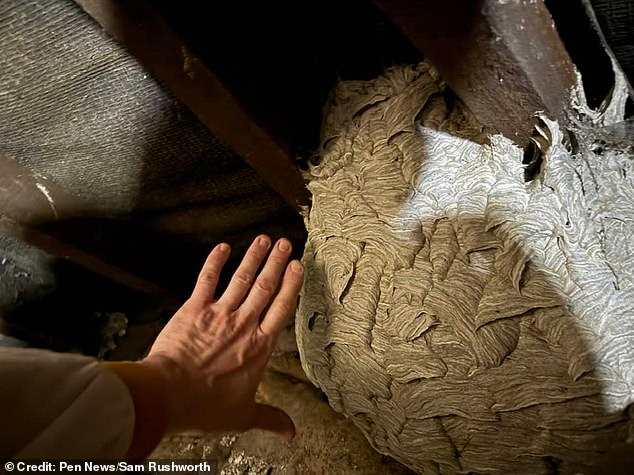
In terms of scale, the wasps’ nests could grow as big as a space hopper, according to the expert. Pictured: a wasps’ nest found in Lancashire this year
In terms of scale, the wasps’ nests could grow as big as a space hopper.
‘Some people get really upset by tiny little wasps nests,’ Andrew said.
‘I’m not so upset about them, I worry about the big ones.
‘I always try to use a comparison – and the space hopper is as big as it can get.
‘And that hums and it’s quite a foe.’
What’s more, the spike in aggressive wasp behaviour usually associated with late summer could be brought forward.
The pest controller said: ‘When we get into peak production, early autumn time, they ramp up.
‘It’s all ramped up and their aggression does as well.
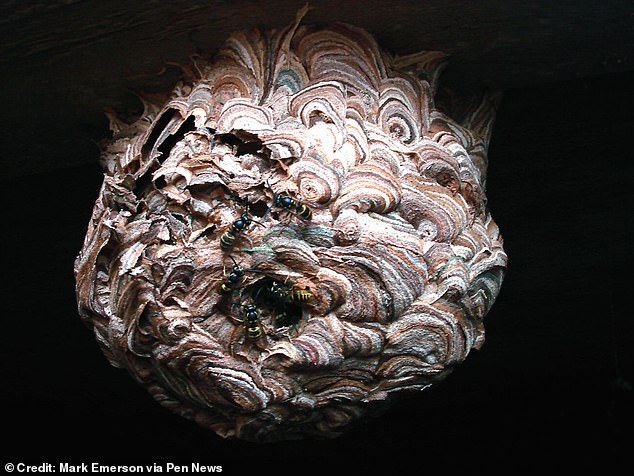
‘I always try to use a comparison – and the space hopper is as big as it can get,’ Andrew said. Pictured: a huge nest in Norfolk
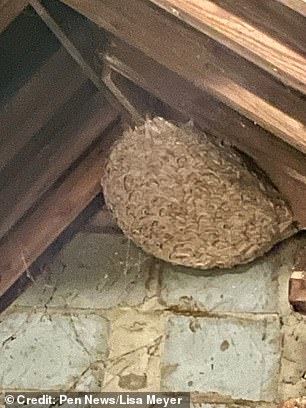
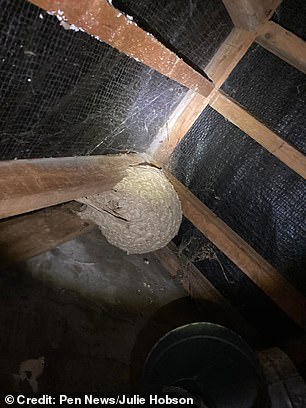
In order to make more room for their nests, wasps have been known to chew through plasterboard, wood, insulation, and other building materials
‘What I would imagine we’re going to find shortly is that will ramp up again, so we’ll get that mad activity earlier.’
He added: ‘This year, 2025, will be the year of the insects because, like now, the weather is continuing in a really suitable vein.’
In order to make more room for their nests, wasps have been known to chew through plasterboard, wood, insulation, and other building materials.
According to Mr Dellbridge, this phenomenon usually occurs late in the season.
But it’s already happening this year, he added.
‘I had one yesterday,’ he said.
‘Hundreds of wasps piling into someone’s house because they literally chewed through already.’
He recalled how one previous customer was rudely awaken by a stretch of wattle and daub wall gnawed open by wasps.
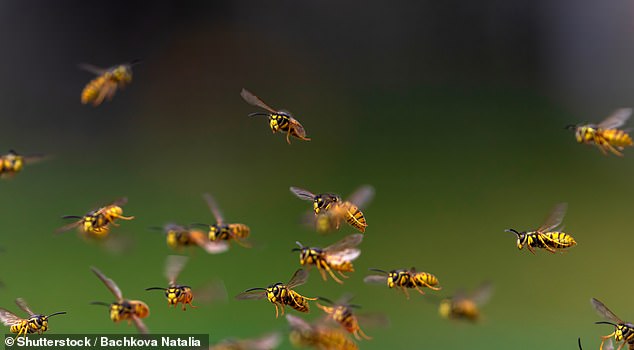
Wasps tend to sting when they become angry or scared. As anyone who has experienced one will know, their stings can be painful – but thankfully most people recover quickly and without complications (stock image)
He said: ‘They were chewing through, and the old–fashioned wattle and daub gave way.
‘And a six foot circle of wall fell on him in the middle of the night onto his bed, followed by the wasps.’
Andrew added: ‘I am doing, for July, masses more jobs a day.
‘This year, whereas you’d possibly have hundreds, or a thousand or so in there, I’m predicting that we’ll have thousands in each nest.
‘So you’re not going to miss them.
‘We are up for a bit of a challenge I think.’
Wasps tend to sting when they become angry or scared.
As anyone who has experienced one will know, their stings can be painful – but thankfully most people recover quickly and without complications.
The sting is designed as a self-defence mechanism but, unlike bees, wasps can sting multiple times.











